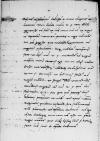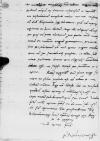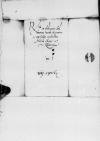Non dubito Vestram Reverendissimam Paternitatem iam abunde cognovisse non solum ex litteris meis, sed etiam ex regiis ad ⌊capitulum Varmiensem⌋, portatis a regio cubiculario me omnia peregisse, quae videbantur opportuna ad negotium postulationis. Neque videbatur operae pretium fore, ut litterae Vestrae Reverendissimae Paternitatis mitterentur ad ⌊regiam maiestatem⌋, verum cavens ego, ne in aliquo videar deesse aut adversari voluntati et desiderio Vestrae Reverendissimae Paternitatis, permisi, ut litterae eius ferantur ad regiam maiestatem, ut scripsi domino vicecancellario, commendans negotium tam Vestrae Reverendissimae Paternitati quam domini ⌊Tidemanni Gisii⌋, pro quo ante paucos dies laboravi peramice et utiliter, dum apud ⌊maiestatem reginalem⌋ quidam instarent pro sublimando domino Plotowski ad episcopatum Culmensem. Sed ego obstiti dicebamque rem iam non esse in potestate ⌊regiae maiestatis⌋, quae dominum ⌊Gisium⌋ certum f tutumque fecit litteris suis de episcopatu Culmensi.
 BK, 230, p. 2
BK, 230, p. 2
De mittendo domino ⌊Nipschicz⌋ nihil voluit ⌊regia maiestas⌋ decernere, antequam ei fuerit responsum a ⌊capitulo⌋, an postulationem amplecti volet necne. Disputavi cum domino Alexandro super electione, quem non repperi eximie in iure doctum. Dixi illi aliquas communes, per quas non puto electionem secundum pacta nunc necessariam et ⌊maiestatem regiam⌋ gravatim proiecto iure per electionem Paternitatis Vestrae Reverendissimae vigore coadiutoriae cum spe succedendi quaesito et tanta solemnitate publicato, denuo item eligendos nominaturum debuit esse, ut scripsi copiose per famulum Paternitatis Vestrae Reverendissimae. ⌊Maiestas reginalis⌋ cum serenissimo ⌊rege iuniore⌋ et filia profecta est ad Sanctam Crucem in Calvum montem. Ego vero concessi hu written over i⌈iuu written over i⌉c in rusculum, quod(?) mihi cessit reverendissimus ⌊dominus nominatus Gnesnensis⌋ et capto auram salubriorem, quam sit ⌊Cracoviae⌋. Valeat feliciter Vestra Reverendissima Patrenitas et de me sibi quod(?) de fratre germano certo persuadeat.



 BK, 230, p. 4
BK, 230, p. 4